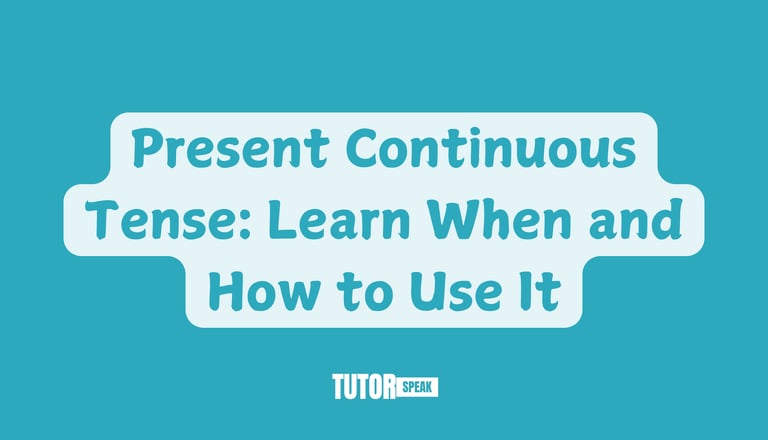Present Continuous Tense: Learn When and How to Use It Naturally
Master the present continuous tense in English with clear rules, examples, and common mistakes. Visit TutorSpeak to explore all English tenses.
TutorSpeak
1 min read


Present Continuous Tense: Learn When and How to Use It Naturally
Master the present continuous tense in English with clear rules, examples, and common mistakes. Visit TutorSpeak to explore all English tenses.
1. What Is the Present Continuous Tense?
The present continuous tense (also called present progressive tense) is used to describe actions happening right now, temporary situations, or planned future events.
Examples:
I am reading a book.
She is working on a project today.
They are playing football at the park.
This tense shows that an action is in progress at the moment of speaking or during a temporary period.
2. How to Form the Present Continuous Tense
The structure is simple:
Subject + am/is/are + verb + -ing
Examples:
I am studying English.
He is watching a movie.
We are learning new English words.
⚠️ Spelling notes for -ing verbs:
For most verbs, just add -ing: work → working
Drop the final e: make → making
Double the final consonant for short vowels: run → running
3. When to Use the Present Continuous Tense
Actions happening now: I am writing an email.
Temporary situations: She is staying with her cousin this week.
Future plans or arrangements: We are meeting our teacher tomorrow.
Repeated actions with irritation: He is always leaving his shoes in the living room!
For more examples and explanations of all English tenses, visit TutorSpeak’s Master English Tenses Guide.
4. Common Mistakes to Avoid
❌ She working on her homework.
✅ She is working on her homework.
❌ I am know the answer.
✅ I know the answer. (Remember: state verbs like know, like, love, believe are not used in continuous form.)
5. Quick Practice Examples
Fill in the blanks with the correct form of the verb:
I ___ (read) an interesting article.
They ___ (play) basketball now.
She ___ (not/watch) TV at the moment.
We ___ (prepare) for the English test tomorrow.
6. Summary
The present continuous tense is essential for describing ongoing actions, temporary situations, and future plans. Using it correctly makes your English sound natural and fluent.
Learn more about English tenses and improve your skills step by step at TutorSpeak.



